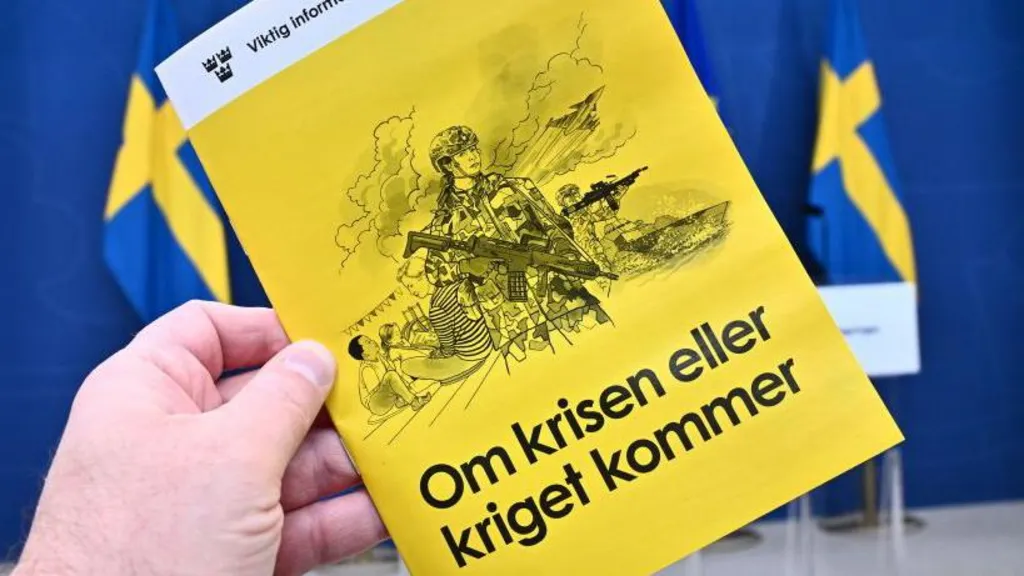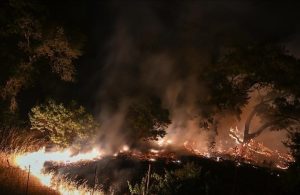
In response to increasing global tensions and a shifting security landscape, Nordic countries are stepping up efforts to prepare their populations for potential crises, including war, natural disasters, and extreme weather events. Sweden, Finland, and Norway have recently updated and distributed comprehensive guides advising citizens on how to survive in the event of such emergencies.
Starting this Monday, millions of Swedes will receive an updated version of their civil preparedness pamphlet, “If Crisis or War Comes.” The guide, which has been revised for the first time in six years, reflects heightened concerns following Russia’s invasion of Ukraine. This expanded booklet, now double the size of its predecessor, urges citizens to prepare for various types of emergencies, with a particular focus on military conflict. The Swedish government emphasizes that, in the event of war, Sweden will never surrender, and it encourages resistance to any forces seeking to undermine national sovereignty.
Finland, a neighbor that shares a long border with Russia and has a history of conflict with the Soviet Union, has also updated its emergency advice. Unlike Sweden, which is distributing paper copies to every household, Finland has opted for a digital version to save costs and allow for easier updates. The Finnish government’s advice includes guidance on how to endure without power for days, with recommendations such as storing iodine tablets for nuclear accidents, non-perishable foods, and pet supplies. Finland’s guide stresses the country’s readiness for self-defense and highlights its commitment to ensuring that citizens are well-prepared for any armed attack.
Norway has taken a similar approach, sending out pamphlets to 2.2 million households in August, advising citizens to be ready to manage on their own for at least a week in the event of extreme weather, war, or other crises. Norway’s guide includes specific items such as energy bars, pasta, and iodine tablets, alongside instructions on how to survive during disruptions to everyday life. It also reflects growing concerns about climate change, with an increased focus on preparing for extreme weather events like floods and landslides. Norway’s Directorate for Civil Protection (DSB) noted that the country has faced rising risks from these types of natural disasters.
The concept of a civil preparedness guide is not new to Sweden. The first edition of “If War Comes” was published during World War II, with updates during the Cold War period. However, with recent geopolitical changes, Swedish authorities have been more vocal about the reality of war. Carl-Oskar Bohlin, Sweden’s Civil Defence Minister, recently warned that “there could be war in Sweden,” underscoring the country’s need to re-establish its “total defense” system, which was scaled down after the Cold War. While Finland has always maintained a high level of defense readiness, Sweden has only recently begun to rebuild its defense infrastructure in response to Russia’s aggression.
The urgency of these updates has prompted mixed reactions among citizens. Finnish-born Ilmari Kaihko, an associate professor of war studies at Sweden’s Defense University, explains that while Finland has always been prepared for the possibility of war, Sweden has had to be “shaken up” to understand that war could happen on its soil. For many Swedes, the reality of such a threat had seemed distant until the war in Ukraine made the possibility more tangible.
Melissa Eve Ajosmaki, a 24-year-old Finnish student in Gothenburg, Sweden, admits that the war in Ukraine initially increased her sense of vulnerability, although she now feels more secure in her current situation. Nevertheless, she continues to think about what she would do if war were to break out, especially considering her family’s location in Finland.
The survival guides across these countries provide practical steps for citizens to prepare for a range of crises. For example, the Finnish pamphlet encourages citizens to consider how they would survive without electricity for extended periods, especially during the harsh winters, where temperatures can drop as low as -20°C. The Swedish guide similarly recommends storing long-lasting food items like potatoes, cabbage, and eggs, as well as prepared meals such as bolognese sauce and soups.
Swedish economist Ingemar Gustafsson, 67, who recalls receiving earlier versions of the pamphlet, expressed a relatively calm outlook: “It’s good that we get information about how we should act and prepare, but it’s not like I have all those preparations at home.” He sees the advice as important but not overly concerning.
One of the primary recommendations in both Sweden and Finland’s guides is to ensure that households have enough food and drinking water to last for at least 72 hours. However, Ilmari Kaihko questions the practicality of such advice for families living in small apartments, where space for storing large quantities of supplies could be limited.
While the Nordic countries’ updated preparedness plans have received attention for their practical advice, they also reflect a broader shift in how these nations perceive and respond to security threats. With Russia’s invasion of Ukraine as a stark reminder of the unpredictable nature of modern warfare, Sweden, Finland, and Norway are preparing their populations for a range of crises, from natural disasters to military conflicts. The updated guidance highlights the importance of self-sufficiency and resilience, ensuring that citizens are ready to cope with emergencies, whether man-made or natural, that could disrupt daily life.





